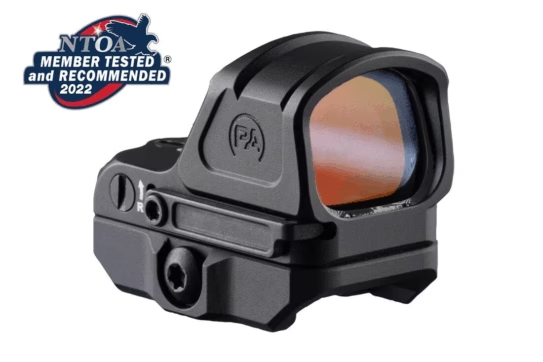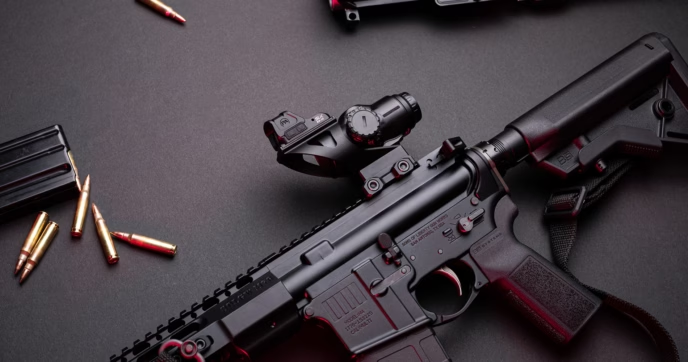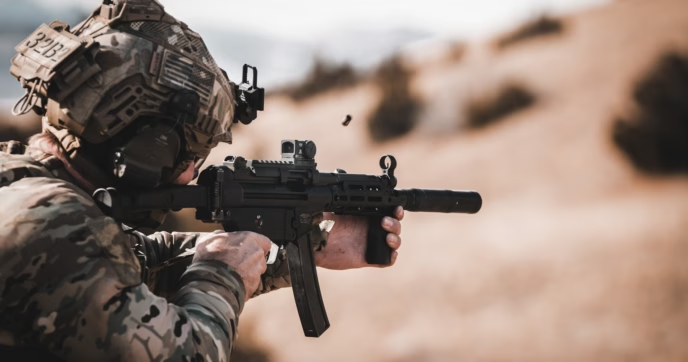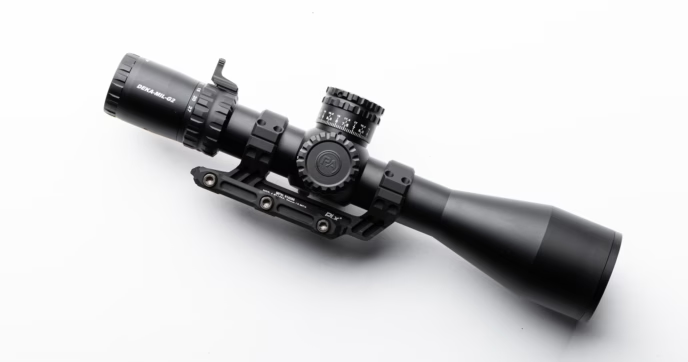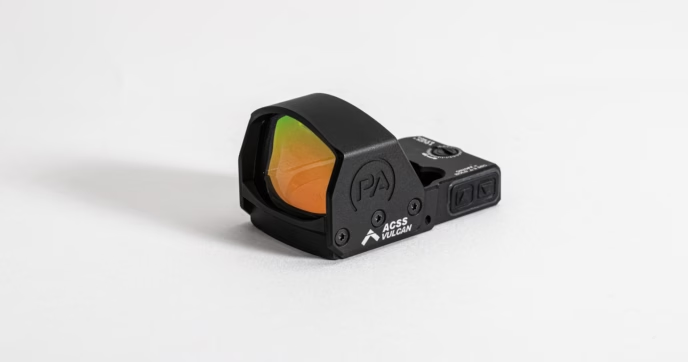Optics are without a doubt some of the most critical upgrades one can make to a pistol nowadays. Although there isn’t anything intrinsically wrong with iron sights, when compared to the utility modern mini-reflex sights and pistol red dots offer, there’s no contest. Modern optics can effectively maximize the capabilities of your pistol, providing you with an intuitive aiming system that lets you place your full focus on your target rather than the sight itself.
However, thanks to the incredible advancements the optics industry has seen in the last decade, there’s now more options to choose from than ever before. If you’ve ever done any shopping for optics, you’ll know that having dozens of high-quality options makes choosing just one challenging, and once you factor in all the different reticle designs that are available, it becomes even more so.
Outside of the standard dot reticle, pistol optics can house a myriad of unique reticles, and each one comes with their own distinct benefits. So, the big questions remain: how many pistol dot reticles are there? And which one is best for you?
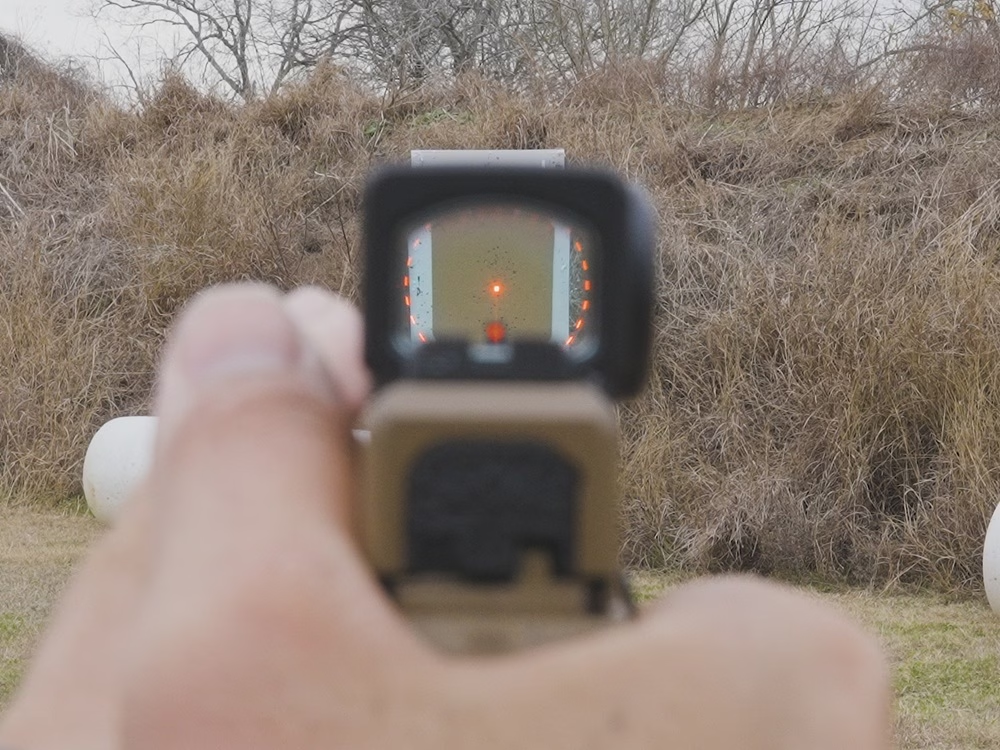
Understanding the Basics of Red Dot Reticles
If you’re new to running red dots on handguns, they essentially work the same way as their full-size counterparts designed for rifles. Light from the optic’s emitter diode is projected and collimated onto the optic’s lens, which is then reflected to your eye to create the reticle image.
Reflex sights most often make use of the standard dot reticle, but as we mentioned above, they’re capable of projecting a plethora of complex reticle designs. Nowadays, it’s common to see pistol red dots with specialized reticle options like circle dot and chevron reticles, and even more sophisticated ones like the ACSS® Vulcan® Reticle System. Even the standard dot reticle has seen an upgrade, with there being multiple sizes to choose from, ranging from ones as small as 1-MOA to as large as 6-MOA.
What is MOA?
Before getting too in the weeds on the different reticles available, it’s important to know what MOA means, and how it applies to your reticle. “MOA” is an acronym standing for “Minute of Angle”, which is a type of angular measurement used for sizing reflex sight reticles and ranging targets at distance. At 100 yards, 1 MOA represents roughly 1 inch of the target (1.047 inches to be exact). On rifle scopes, MOA-based measurement allows you to make some complex holds when shooting at distance, but on red dot sights, MOA is used to describe the size of the reticle itself.
Since 1 MOA accounts for roughly 1 inch of your target at 100 yards, if your reticle’s dot size was 3-MOA, at 100 yards, it would cover roughly 3 inches of the target, meaning it would cover 6 inches at 200 yards, and so on. Now, for a pistol, you likely aren’t going be engaging targets anywhere close to those ranges, so why does the size of your reticle even matter? Well, it’s all about target acquisition speed.
Generally, a larger dot size is going to be better suited for applications that prioritize fast target acquisition, while smaller dots are better for situations where extra precision is needed. Granted, there is no one single ‘best’ dot size, as this is entirely up to user preference. For some more info, we recommend checking out our article on 3-MOA vs. 6-MOA to get a more in-depth look at the unique advantages offered by different dot sizes.
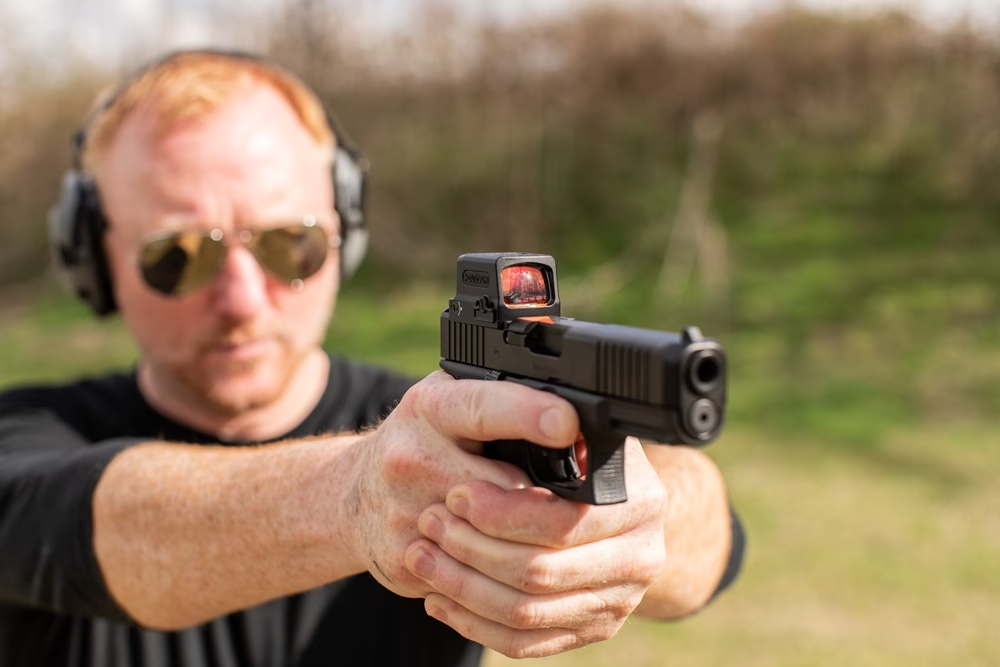
How Sight Design Affects Target Acquisition
The overall design of your optic’s reticle plays a significant role in how quickly you can acquire a target when shooting. Typically, having a larger reticle makes it easier to find when taking aim. And while they certainly are popular, you can also opt for something like a circle dot reticle. Popularized for their use on rifles and for the extra targeting information they provide, they’ve become a popular option for pistol optics as the outer circle provides an eye-catching element that can greatly increase target acquisition speed.
Take competitive shooting for example. In such applications, you’ll be engaging multiple targets in quick succession, rapidly transitioning from one to the next. As such, you can benefit more from having a larger dot reticle or a circle dot, with the same being true for other dynamic applications like duty use and personal defense. However, while it is true that larger reticles are generally better for facilitating fast target acquisition, this doesn’t mean that smaller dots aren’t without their advantages.
If you dedicate time to train and reinforce the fundamentals of pistol shooting with a mini-reflex sight, you can easily use an optic with a finer dot size. Smaller dots/reticles, while not as easy to acquire, provide an extra modicum of precision at longer distances that larger ones simply can’t. So, in specific competitive applications where you may be expected to engage targets at say, 25 yards, it’s far easier to do so accurately with a finer dot. Still, it’s critical to note that smaller dots do require some extra training time to become proficient with them, but this same notion applies to every optic, regardless of the reticle.
Specialized Reticle Systems
While circle dot red dot sights and optics with larger dot reticles can certainly make it easier to acquire your sights and target when presenting your pistol, a common issue that many enthusiasts run into is losing the dot. Essentially, when presenting their pistol to take aim, they have to adjust their grip and head position to find the reticle, which can take time. And in applications where every second counts, specialized reticles like the ACSS Vulcan and the Holosun Competition Reticle System (CRS) make finding the dot far easier.
The ACSS Vulcan is one of the most powerful reticle systems ever designed, and it’s also the only one of its kind. The ACSS Vulcan consists of either a center dot, or chevron, as well as a large, 250-MOA outer ring. This large outer ring is only visible whenever your aim is off-center, allowing you to quickly correct your aim instead of having to find the dot. This AutoAim™ functionality really sets it apart from other reticles and ensures that you’ll be able to effectively engage your target in a fast and efficient manner, regardless of your application.
Holosun’s CRS reticle is another solid reticle choice for fast target acquisition. Rather than just having a single dot and circle, the CRS reticle is made up of a 2-MOA center dot, as well as an 8-, 20-, and a 32-MOA outer ring, each of which can be turned on or off depending on your preference. Although it doesn’t offer the same AutoAim capabilities as the ACSS Vulcan reticle, its user-configurable design allows you to easily tailor the reticle to best fit your needs. And, with it being designed specifically for competition use, it excels in applications where fast target acquisition is needed. One of the only caveats of the CRS reticle is that it’s currently only available on the Holosun 507Comp. That said, there are a plethora of other Holosun pistol red dot options that make use of larger dot and circle dot reticles to choose from.
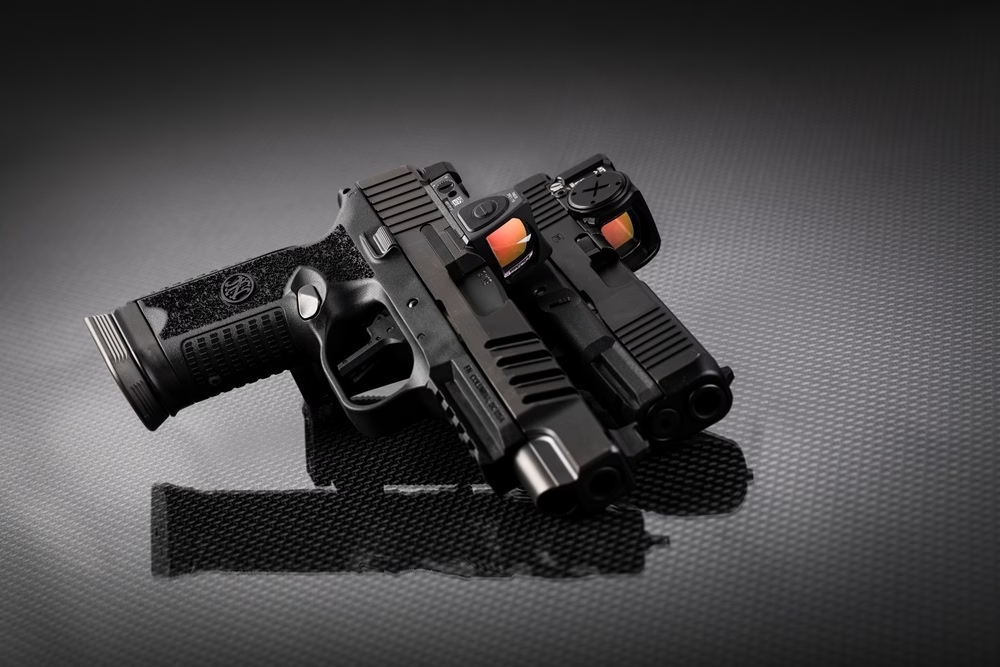
Types of Pistol Red Dot Sights
So, now that you have a fairly good idea of the performance different reticles offer, it’s time to move on to the optics that use them. As far as pistol optics go, you essentially have two options to choose from: open-emitter mini-reflex sights and enclosed emitter pistol red dot sights. Now, we cover both optic types in depth in our guide on Closed vs. Open-Emitter red dots, but below, we have a brief summation of their capabilities:
Open-emitter mini-reflex sights are, arguably, the most common variation of reflex sights available for handguns. As their name suggests, they make use of an open-emitter design, with the optic consisting of the optic body and just one lens. Although such a design does leave the emitter diode exposed to outside elements like dirt, debris, and water, they provide an incredibly wide field of view thanks to their open design. Plus, with the advancements in the optics industry, they can be exceptionally durable, making them more-than-usable in just about any application.
On the other hand, you have enclosed-emitter pistol red dot sights, a more durable alternative to open-emitter optics. As denoted by their name, these optics are essentially a shrunken version of full-size red dot sights, making use of a fully enclosed design and two lenses. Being enclosed, they don’t offer as wide an FOV as open optics, but they’re still exceptionally utilitarian. The main advantage they have over open-emitter optics is their durability. Being enclosed, the emitter is always protected against environmental debris and other hazards, making them the better choice for more intensive competitive and duty use.
Choosing an Optic
Both open- and closed-emitter optics have their advantages, so neither one is inherently better than the other, with the ‘better’ option being the one that best fits your needs and preferences. That said, if you’ve ever done a cursory search for pistol red dots, you’ll already know that there are a lot to choose from. And while it would be impossible to concisely lay out all the options to choose from, we can help get you started in your search for your next optic.
Primary Arms Optics
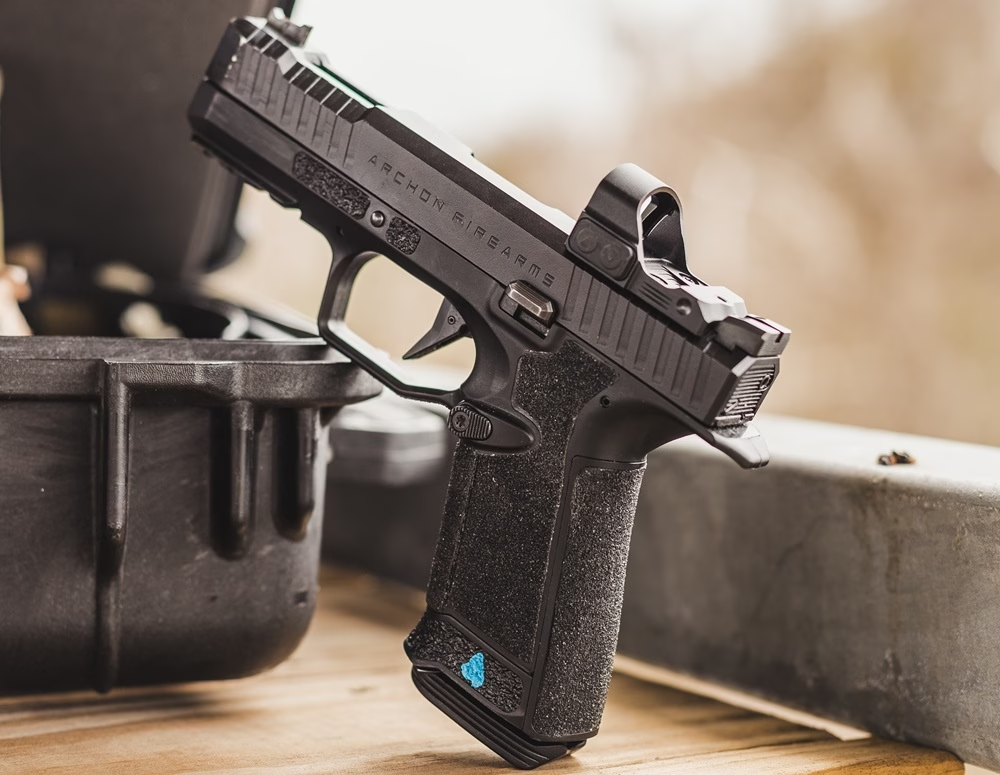
Classic Series Mini-Reflex Sights
If you’re in the market for a budget-friendly mini-reflex sight that doesn’t compromise on quality, Primary Arms Optics’ Classic Series options are where it’s at. Coming equipped with many premium features, they’re a solid entry-level optic that’s a perfect fit for everything from concealed carry to less intensive competitive use.
For smaller handguns, the Classic Series 21mm Micro Reflex Sight Gen 2 is a solid pick, using the popular RMSc mounting footprint. Equipped with AutoLive® motion sensing illumination, as well as an automatic shut-off feature, it boasts an impressive battery life that can last upwards of 40,000+ hours. Lastly, these optics can come equipped with either a 3-MOA red or green dot reticle, making them a solid pick for micro- and sub-compact EDC pistols.
A larger optic, the Classic Series 24mm Mini Reflex Sight Gen 2 is another great optic for the money. Designed for larger handguns, it makes use of the common RMR footprint, and it comes with all the same features as the 21mm MRS highlighted above. Because of its larger size, it offers an even wider FOV, and since it’s also equipped with AutoLive motion-sensing illumination, it also has a battery life of 40,000+ hours, and it can also feature either a red or green 3-MOA dot reticle.
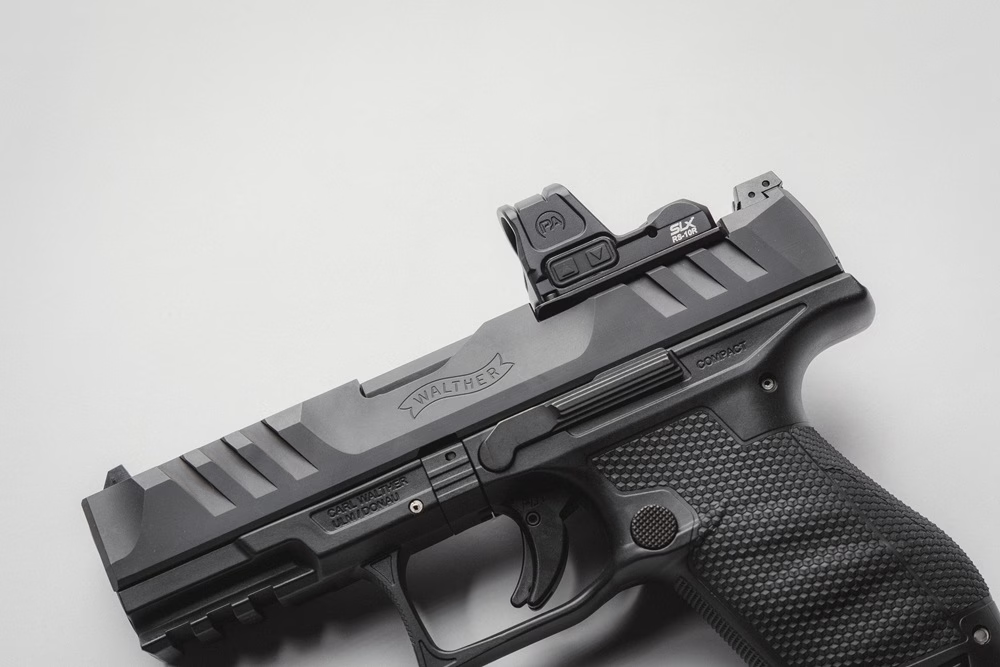
RS Series Optics
A step up from their Classic Series, PAO’s RS series mini-reflex sights are another great possibility to consider. These optics are built with higher-quality 7075-T6 aluminum for added durability and come with more premium glass.
Starting with the SLx® RS-10R Mini Reflex Sight, it has a few notable upgrades over the Classic Series optics. For starters, it makes use of the popular 507C/RMR mounting footprint, and it even comes with an adapter plate for GLOCK MOS pistols. Powered by a CR1632 battery, its battery life can last upwards of 40,000+ hours, and it also comes standard with AutoLive illumination and an automatic shut-off to further extend its lifespan. Lastly, this optic comes standard with a 3-MOA dot reticle.
For those in the market for a more premium optic, the GLx RS-15 Mini Reflex Sight is suitable for every application and comes with some notable upgrades. Being a part of the GLx line of optics, it’s equipped with higher quality glass and a more durable construction that’s both waterproof and shockproof. Additionally, this optic makes use of the ACSS Vulcan reticle system, and if you’d prefer, you can change it to project just the 3-MOA dot. Because of the complexity of the Vulcan reticle, this optic’s battery lifespan is only 5,000 hours when using it, though it can last upwards of 25,000+ hours when using just the 3-MOA dot. Still, these optics are equipped with AutoLive, so if you’re mindful of your brightness setting, they can last a long time.
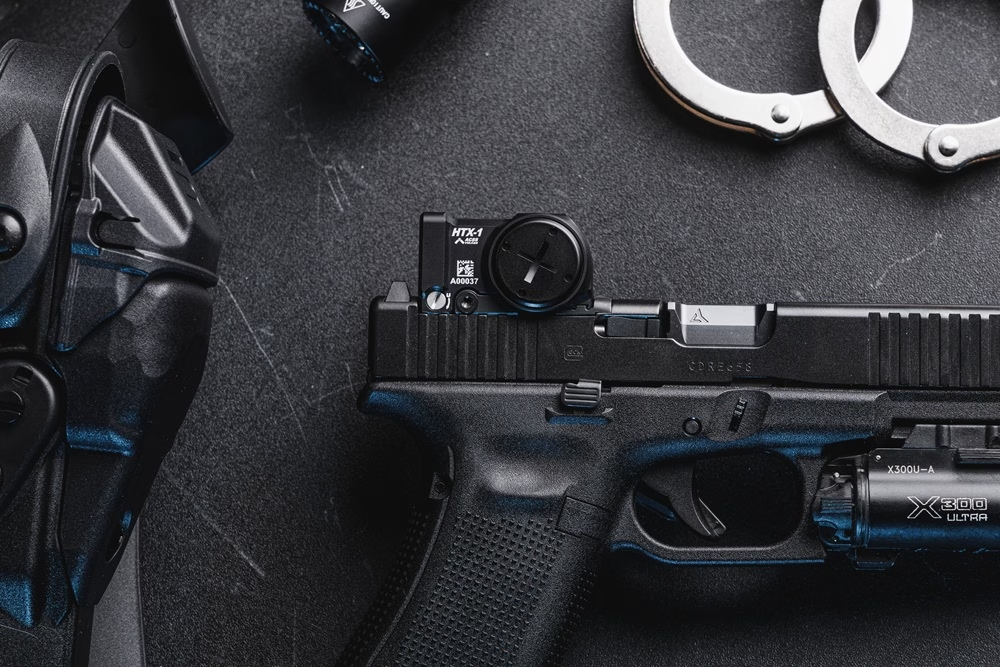
PLx® HTX-1™
The Primary Arms HTX-1 is the first American-made optic offered in their lineup, and it’s also their first enclosed pistol red dot sight choice too. Being a part of the PLx line of optics, it’s a professional grade optic designed to handle harsh use in the roughest conditions without failing.
Built around a rugged 7075-T6 aluminum optic body, the HTX-1 comes equipped with fully multi-coated lenses for optimal light transmission, and it also completely protects the emitter diode thanks to its enclosed design. Plus, it’s both waterproof and shockproof as well. Still, while the HTX-1 is easily one of the most premium enclosed pistol optics on the market, it has one other feature that further sets it apart from the rest.
Rather than using a single mounting footprint, the HTX-1 mounts to optic-ready pistols with its own patented Modular Chassis System. This means that the HTX-1 is compatible with nearly every currently existing optic mounting footprint. And to make it even more enticing, it comes with the ACSS Vulcan Reticle system too, though it is available with just a 4-MOA dot reticle if you’d prefer that instead. Lastly, with it being powered by a CR2032 battery and having both AutoLive illumination and an automatic shut-off, its battery life can last upwards 25,000+ hours, making it a solid choice for everything from concealed carry to field use.
Conclusion
With all the unique pistol optics available from dozens of manufacturers, choosing just one is already a challenge. However, once you notice all the different reticle options to choose from, it can get overwhelming quick. That said, it doesn’t have to be. Each reticle type has its own unique pros and cons, with some being better suited for different applications and individual needs.
For simplicity’s sake, it’s tough to beat the standard dot reticle, as it’s been the go-to option since reflex sights first hit the scene. But, if you want some extra utility out of your optic, circle dot reticles are far more eye-catching, making it easy to find the dot and quickly get on target. And lastly, for the fastest target acquisition speed possible, the ACSS Vulcan reigns supreme, as its large outer circle quickly guides you back to the center dot whenever your aim is off.
Still, there’s one last thing to make note of before you set off to buy your next optic. No matter which reticle your optic of choice uses, it won’t make any difference if you don’t train with it. Yes, a larger reticle with more elements is certainly helpful in getting you on target, but if you aren’t training regularly, you won’t reap the benefits such reticles truly offer. So, regardless of which one you choose, be sure to dedicate some time to hone your skills with it.
